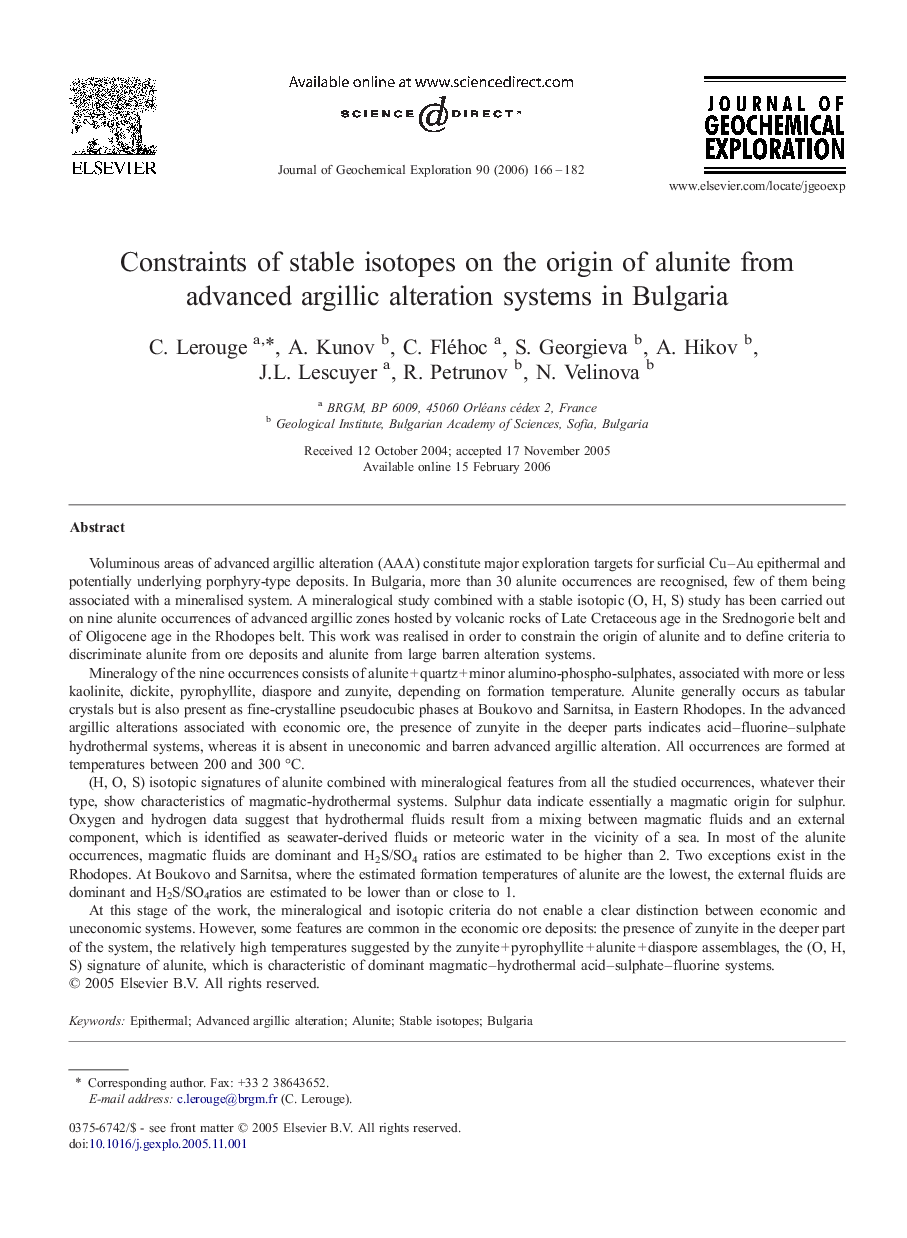| کد مقاله | کد نشریه | سال انتشار | مقاله انگلیسی | نسخه تمام متن |
|---|---|---|---|---|
| 4458352 | 1620959 | 2006 | 17 صفحه PDF | دانلود رایگان |

Voluminous areas of advanced argillic alteration (AAA) constitute major exploration targets for surficial Cu–Au epithermal and potentially underlying porphyry-type deposits. In Bulgaria, more than 30 alunite occurrences are recognised, few of them being associated with a mineralised system. A mineralogical study combined with a stable isotopic (O, H, S) study has been carried out on nine alunite occurrences of advanced argillic zones hosted by volcanic rocks of Late Cretaceous age in the Srednogorie belt and of Oligocene age in the Rhodopes belt. This work was realised in order to constrain the origin of alunite and to define criteria to discriminate alunite from ore deposits and alunite from large barren alteration systems.Mineralogy of the nine occurrences consists of alunite + quartz + minor alumino-phospho-sulphates, associated with more or less kaolinite, dickite, pyrophyllite, diaspore and zunyite, depending on formation temperature. Alunite generally occurs as tabular crystals but is also present as fine-crystalline pseudocubic phases at Boukovo and Sarnitsa, in Eastern Rhodopes. In the advanced argillic alterations associated with economic ore, the presence of zunyite in the deeper parts indicates acid–fluorine–sulphate hydrothermal systems, whereas it is absent in uneconomic and barren advanced argillic alteration. All occurrences are formed at temperatures between 200 and 300 °C.(H, O, S) isotopic signatures of alunite combined with mineralogical features from all the studied occurrences, whatever their type, show characteristics of magmatic-hydrothermal systems. Sulphur data indicate essentially a magmatic origin for sulphur. Oxygen and hydrogen data suggest that hydrothermal fluids result from a mixing between magmatic fluids and an external component, which is identified as seawater-derived fluids or meteoric water in the vicinity of a sea. In most of the alunite occurrences, magmatic fluids are dominant and H2S/SO4 ratios are estimated to be higher than 2. Two exceptions exist in the Rhodopes. At Boukovo and Sarnitsa, where the estimated formation temperatures of alunite are the lowest, the external fluids are dominant and H2S/SO4ratios are estimated to be lower than or close to 1.At this stage of the work, the mineralogical and isotopic criteria do not enable a clear distinction between economic and uneconomic systems. However, some features are common in the economic ore deposits: the presence of zunyite in the deeper part of the system, the relatively high temperatures suggested by the zunyite + pyrophyllite + alunite + diaspore assemblages, the (O, H, S) signature of alunite, which is characteristic of dominant magmatic–hydrothermal acid–sulphate–fluorine systems.
Journal: Journal of Geochemical Exploration - Volume 90, Issue 3, September 2006, Pages 166–182